
Lt. Gen. Mikhail T. Kalashnikov with a model of the AK-47 in 1997.
Lt. Gen. Mikhail T. Kalashnikov, the arms designer credited by the Soviet Union with creating the AK-47, the first in a series of rifles and machine guns that would indelibly associate his name with modern war and become the most abundant firearms ever made, died on Monday in Izhevsk, the capital of the Russian republic of Udmurtia, where he lived. He was 94.

On a few occasions, when in a more reflective mood, the usually forceful Kalashnikov wondered what might have been.
"I'm proud of my invention, but I'm sad that it is used by terrorists," he said once.
"I would prefer to have invented a machine that people could use and that would help farmers with their work – for example a lawnmower."
Indeed, at his museum in Izhevsk, where he spent most of his life working at the factory that was eventually named after him, there is an ingenious mechanical lawnmower Kalashnikov invented to more easily take care of the lawn at his country house.
It’s not what he will be remembered for.
Considering his age and circumstances, it was hardly surprising that Kalashnikov felt he could best serve his country by creating weapons.
Born in 1919, Mikhail was the seventeenth child of well-off peasants. When he was eleven, during Joseph Stalin’s collectivization campaign his parents had their land confiscated, and the whole family was exiled to Siberia (a fact rarely mentioned in fawning Soviet-era biographies).
Multimedia
The AK-47 at 60 (July 13, 2007)
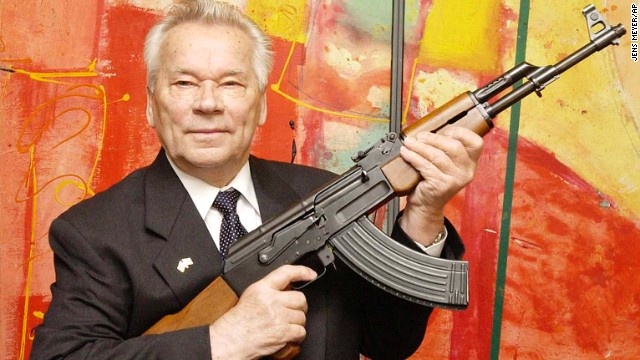 Russian weapons designer Mikhail Kalashnikov presents his legendary assault rifle, the AK-47, to the media while opening an exhibition of his work at a weapons museum in Suhl, Germany, in 2002. Kalashnikov died on December 23 at the age of 94. Click through to see where else in the world the AK-47 has appeared.
A soldier in the anti-government army of the Sudan holds his AK-47 rifle at the ready in 1971.
A diver retrieves an AK-47 from the bottom of the Suez Canal in Egypt in 1975.
Fighters with the Eritrean People's Liberation Front sit with their rifles in 1978.
Iranian Revolutionary Guard Corps members assemble during a commemoration of their foundation in Tehran in 1981.
A Shiite Muslim militiaman fires his AK-47 during a battle in West Beirut, Lebanon, in 1987.
A Russian sailor stands guard with an AK-47 in Moscow during a visit from then-U.S. President Ronald Reagan in 1988.
An anti-Communist civilian fighter runs with an AK-47 during a street-fight in Bucharest, Romania, in 1989.
Then-Iraqi President Saddam Hussein brandishes an AK-47 during his visit to villages in northern Iraq in 1998, in this Iraqi News Agency released photograph.
Osama bin Laden fires an AK-47 in this still frame from the infamous video of him released after September 11, 2001.
A soldier with the Liberation Army of Presevo, Medvedja and Bujanovac guards his position near the village of Shoshaj, Yugoslavia, in 2001.
A soldier stands guard at the entrance to a sanctuary for Kim Jong Il in Myohyangsan, North Korea, in 2005.
A man guards the the village of Jebel Shugruf in the Haraz Mountains of Yemen in 2006.
A Pakistani tribesman carries an AK-47 assault rifle after an air strike in Damadola, Pakistan, in 2006.
An Iraqi policewoman receives guidance firing an AK-47 during target practice in Karbala, Iraq, in 2008.
Members of the Karo Tribe pose with AK-47s in Korcho, Ethiopia, in 2008.
Kenyan policemen confront demonstrators during post-election clashes in the Mathare slums of Nairobi in 2008.
Newly recruited Rangers practice with their AK-47s during a training session at a military camp in the southern Narathiwat province of Thailand in 2009.
An AK-47 leans against a makeshift bench press that U.S. Marines built in their base in Delaram, Afghanistan, in 2009.
A man shoots an AK-47 at a shooting range in West Point, Kentucky, in 2009.
Anti-Libyan-government militants gather on the front line in Brega, Libya, in 2011.
A Syrian opposition fighter poses with his AK-47 in Aleppo, Syria, in 2012.
A soldier with the Malian army patrols a street in Gao, Mali, with an AK-47 on February 25, 2013.
The long arm of Kalashnikov's AK-47
HIDE CAPTION
Russian weapons designer Mikhail Kalashnikov presents his legendary assault rifle, the AK-47, to the media while opening an exhibition of his work at a weapons museum in Suhl, Germany, in 2002. Kalashnikov died on December 23 at the age of 94. Click through to see where else in the world the AK-47 has appeared.
A soldier in the anti-government army of the Sudan holds his AK-47 rifle at the ready in 1971.
A diver retrieves an AK-47 from the bottom of the Suez Canal in Egypt in 1975.
Fighters with the Eritrean People's Liberation Front sit with their rifles in 1978.
Iranian Revolutionary Guard Corps members assemble during a commemoration of their foundation in Tehran in 1981.
A Shiite Muslim militiaman fires his AK-47 during a battle in West Beirut, Lebanon, in 1987.
A Russian sailor stands guard with an AK-47 in Moscow during a visit from then-U.S. President Ronald Reagan in 1988.
An anti-Communist civilian fighter runs with an AK-47 during a street-fight in Bucharest, Romania, in 1989.
Then-Iraqi President Saddam Hussein brandishes an AK-47 during his visit to villages in northern Iraq in 1998, in this Iraqi News Agency released photograph.
Osama bin Laden fires an AK-47 in this still frame from the infamous video of him released after September 11, 2001.
A soldier with the Liberation Army of Presevo, Medvedja and Bujanovac guards his position near the village of Shoshaj, Yugoslavia, in 2001.
A soldier stands guard at the entrance to a sanctuary for Kim Jong Il in Myohyangsan, North Korea, in 2005.
A man guards the the village of Jebel Shugruf in the Haraz Mountains of Yemen in 2006.
A Pakistani tribesman carries an AK-47 assault rifle after an air strike in Damadola, Pakistan, in 2006.
An Iraqi policewoman receives guidance firing an AK-47 during target practice in Karbala, Iraq, in 2008.
Members of the Karo Tribe pose with AK-47s in Korcho, Ethiopia, in 2008.
Kenyan policemen confront demonstrators during post-election clashes in the Mathare slums of Nairobi in 2008.
Newly recruited Rangers practice with their AK-47s during a training session at a military camp in the southern Narathiwat province of Thailand in 2009.
An AK-47 leans against a makeshift bench press that U.S. Marines built in their base in Delaram, Afghanistan, in 2009.
A man shoots an AK-47 at a shooting range in West Point, Kentucky, in 2009.
Anti-Libyan-government militants gather on the front line in Brega, Libya, in 2011.
A Syrian opposition fighter poses with his AK-47 in Aleppo, Syria, in 2012.
A soldier with the Malian army patrols a street in Gao, Mali, with an AK-47 on February 25, 2013.
The long arm of Kalashnikov's AK-47
HIDE CAPTION
A soldier in the anti-government army of the Sudan holds his AK-47 rifle at the ready in 1971.
A diver retrieves an AK-47 from the bottom of the Suez Canal in Egypt in 1975.
Fighters with the Eritrean People's Liberation Front sit with their rifles in 1978.
Iranian Revolutionary Guard Corps members assemble during a commemoration of their foundation in Tehran in 1981.
A Shiite Muslim militiaman fires his AK-47 during a battle in West Beirut, Lebanon, in 1987.
A Russian sailor stands guard with an AK-47 in Moscow during a visit from then-U.S. President Ronald Reagan in 1988.
An anti-Communist civilian fighter runs with an AK-47 during a street-fight in Bucharest, Romania, in 1989.
Then-Iraqi President Saddam Hussein brandishes an AK-47 during his visit to villages in northern Iraq in 1998, in this Iraqi News Agency released photograph.
Osama bin Laden fires an AK-47 in this still frame from the infamous video of him released after September 11, 2001.
A soldier with the Liberation Army of Presevo, Medvedja and Bujanovac guards his position near the village of Shoshaj, Yugoslavia, in 2001.
A soldier stands guard at the entrance to a sanctuary for Kim Jong Il in Myohyangsan, North Korea, in 2005.
A man guards the the village of Jebel Shugruf in the Haraz Mountains of Yemen in 2006.
A Pakistani tribesman carries an AK-47 assault rifle after an air strike in Damadola, Pakistan, in 2006.
An Iraqi policewoman receives guidance firing an AK-47 during target practice in Karbala, Iraq, in 2008.
Members of the Karo Tribe pose with AK-47s in Korcho, Ethiopia, in 2008.
Kenyan policemen confront demonstrators during post-election clashes in the Mathare slums of Nairobi in 2008.
Newly recruited Rangers practice with their AK-47s during a training session at a military camp in the southern Narathiwat province of Thailand in 2009.
An AK-47 leans against a makeshift bench press that U.S. Marines built in their base in Delaram, Afghanistan, in 2009.
A man shoots an AK-47 at a shooting range in West Point, Kentucky, in 2009.
Anti-Libyan-government militants gather on the front line in Brega, Libya, in 2011.
A Syrian opposition fighter poses with his AK-47 in Aleppo, Syria, in 2012.
A soldier with the Malian army patrols a street in Gao, Mali, with an AK-47 on February 25, 2013.
The long arm of Kalashnikov's AK-47
HIDE CAPTION
Connect With Us on Twitter
Follow @nytimesworld for international breaking news and headlines.
Readers’ Comments
Readers shared their thoughts on this article.
Viktor Chulkov, a spokesman for the republic’s president, confirmed the death, the Itar-Tass news agency reported.
Born a peasant on the southern Siberian steppe, General Kalashnikov had little formal education and claimed to be a self-taught tinkerer who combined innate mechanical skills with the study of weapons to conceive of a rifle that achieved battlefield ubiquity.
His role in the rifle’s creation, and the attention showered on him by the Kremlin’s propaganda machine, carried him from conscription in the Red Army to senior positions in the Soviet arms-manufacturing bureaucracy and ultimately to six terms on the Supreme Soviet, the Soviet Union’s legislative body.
Tens of millions of Kalashnikov rifles have been manufactured. Their short barrels, steep front-sight posts and curved magazines made them a marker of conflict that has endured for decades. The weapons also became both Soviet and revolutionary symbols and widespread instruments of terrorism, child-soldiering and crime.
The general, who sometimes lamented the weapons’ unchecked distribution but took pride in having invented them and in their reputation for reliability, weathered the collapse of the Soviet Union to assume a public role as a folk hero and unequivocal Russian patriot.
A Soviet nostalgist, he also served as the unofficial arms ambassador of the revived Russian state. He used public appearances to try to cast the AK-47’s checkered legacy in a positive way and to complain that knockoffs were being manufactured illegally by former Soviet allies and cutting into Russian sales.
The weapon, he said, was designed to protect his motherland, not to be used by terrorists or thugs. “This is a weapon of defense,” he said. “It is not a weapon for offense.”
General Kalashnikov’s public life resulted from a secret competition to develop the Soviet infantry rifle for the Cold War. The result was the AK-47 — an abbreviation for “the automatic by Kalashnikov” followed by the year the competition ended.
General Kalashnikov, a senior sergeant at the time who had been injured in battle against German tanks, was credited with leading the design bureau that produced the AK-47 prototype. The Soviet Union began issuing a mass-produced version in 1949.
The true AK-47 was short-lived. It was followed in the 1950s by a modernized version, the A.K.M., which retained its predecessor’s underlying design while reducing its weight and manufacturing time.
Shorter than traditional infantry rifles and firing a cartridge midway between the power of a pistol and the standard rifle cartridges of the day, the Kalashnikov line was initially dismissed by American ordnance experts as a weapon of small consequence. It was not particularly accurate or well made, they said, and it lacked range and stopping power.
It cemented its place in martial history in the 1960s in Vietnam. There, a new American rifle, the M-16, experienced problems with corrosion and jamming in the jungles, while Kalashnikovs, carried by Vietcong guerrillas and North Vietnamese soldiers, worked almost flawlessly.
By this time, in an effort to standardize infantry weapons among potential allies, the Soviet Union had exported the rifle’s specifications and its manufacturing technology to China, Egypt, North Korea and Warsaw Pact nations. Communist engineers would eventually share the manufacturing technology with other countries, including Iraq.
The design was incorporated into arms manufactured in Finland, Israel, South Africa and other nations. The result was a long line of derivatives and copies.
Because Kalashnikov rifles were principally made by secretive governments and often changed hands in nontransparent transfers, it is not known how many have been manufactured. Common estimates put production at 70 million to 100 million; either number would dwarf the production of any other gun.

 A soldier in the anti-government army of the Sudan holds his AK-47 rifle at the ready in 1971.
A soldier in the anti-government army of the Sudan holds his AK-47 rifle at the ready in 1971.
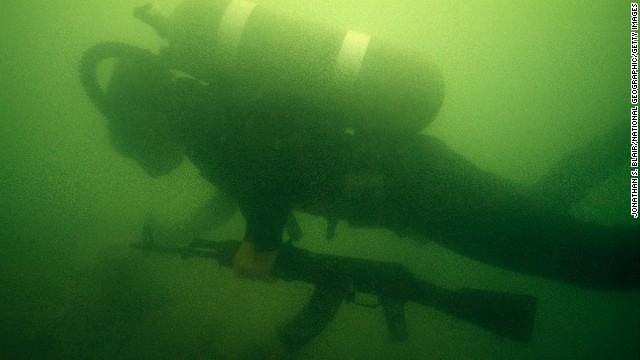 A diver retrieves an AK-47 from the bottom of the Suez Canal in Egypt in 1975.
A diver retrieves an AK-47 from the bottom of the Suez Canal in Egypt in 1975.
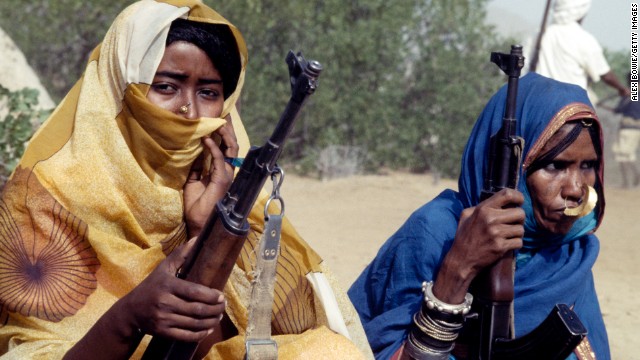 Fighters with the Eritrean People's Liberation Front sit with their rifles in 1978.
Fighters with the Eritrean People's Liberation Front sit with their rifles in 1978.
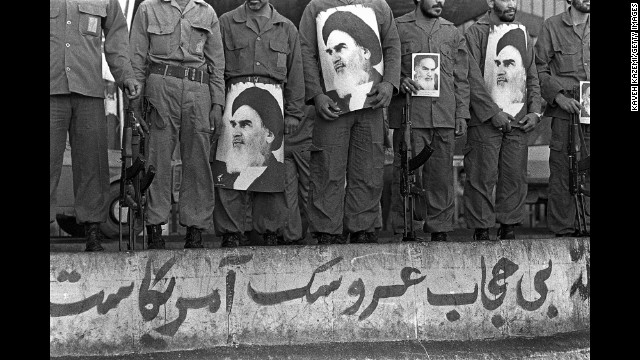 Iranian Revolutionary Guard Corps members assemble during a commemoration of their foundation in Tehran in 1981.
Iranian Revolutionary Guard Corps members assemble during a commemoration of their foundation in Tehran in 1981.
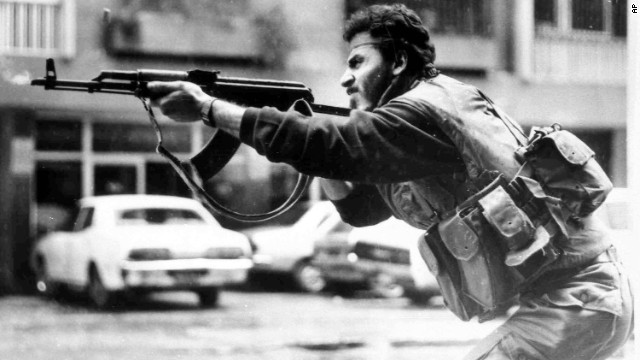 A Shiite Muslim militiaman fires his AK-47 during a battle in West Beirut, Lebanon, in 1987.
A Shiite Muslim militiaman fires his AK-47 during a battle in West Beirut, Lebanon, in 1987.
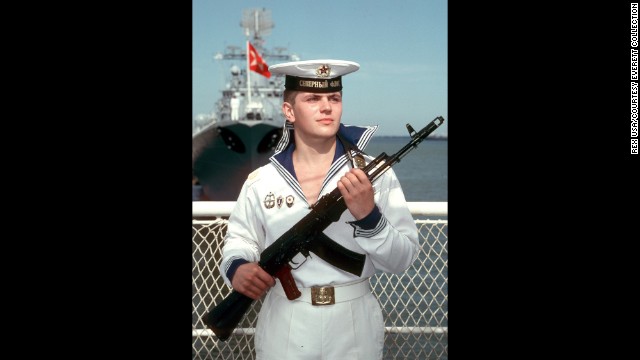 A Russian sailor stands guard with an AK-47 in Moscow during a visit from then-U.S. President Ronald Reagan in 1988.
A Russian sailor stands guard with an AK-47 in Moscow during a visit from then-U.S. President Ronald Reagan in 1988.
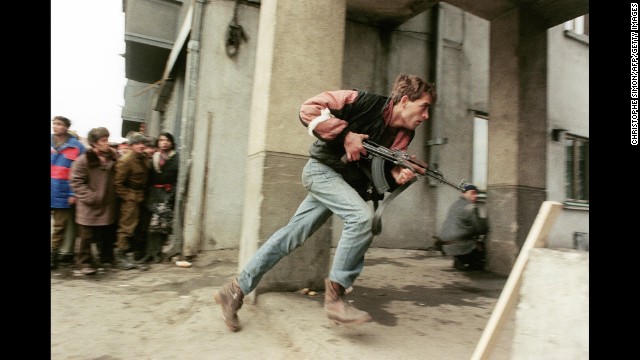 An anti-Communist civilian fighter runs with an AK-47 during a street-fight in Bucharest, Romania, in 1989.
An anti-Communist civilian fighter runs with an AK-47 during a street-fight in Bucharest, Romania, in 1989.
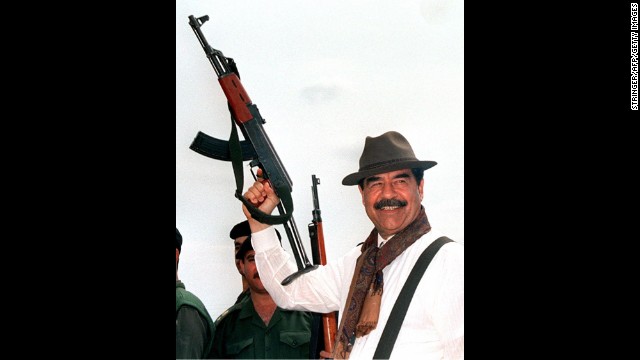 Then-Iraqi President Saddam Hussein brandishes an AK-47 during his visit to villages in northern Iraq in 1998, in this Iraqi News Agency released photograph.
Then-Iraqi President Saddam Hussein brandishes an AK-47 during his visit to villages in northern Iraq in 1998, in this Iraqi News Agency released photograph.
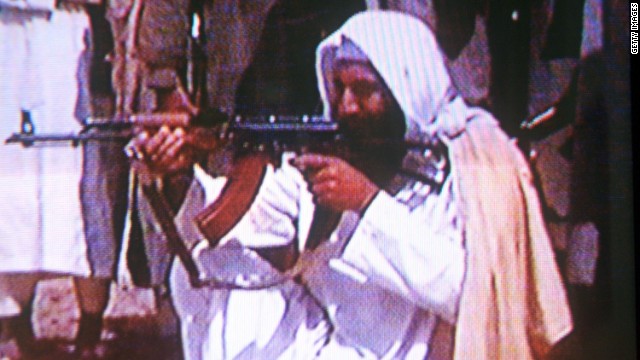 Osama bin Laden fires an AK-47 in this still frame from the infamous video of him released after September 11, 2001.
Osama bin Laden fires an AK-47 in this still frame from the infamous video of him released after September 11, 2001.
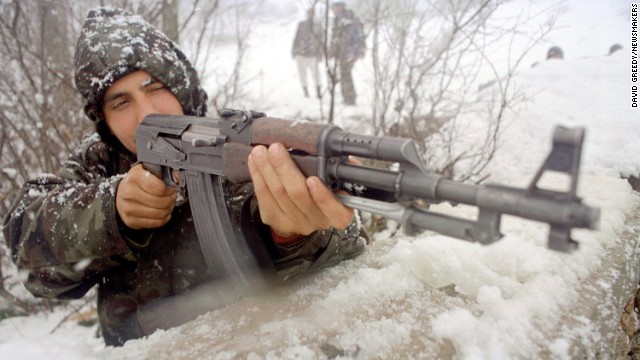 A soldier with the Liberation Army of Presevo, Medvedja and Bujanovac guards his position near the village of Shoshaj, Yugoslavia, in 2001.
A soldier with the Liberation Army of Presevo, Medvedja and Bujanovac guards his position near the village of Shoshaj, Yugoslavia, in 2001.
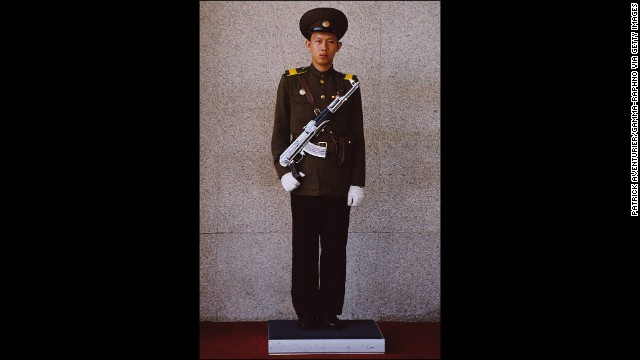 A soldier stands guard at the entrance to a sanctuary for Kim Jong Il in Myohyangsan, North Korea, in 2005.
A soldier stands guard at the entrance to a sanctuary for Kim Jong Il in Myohyangsan, North Korea, in 2005.
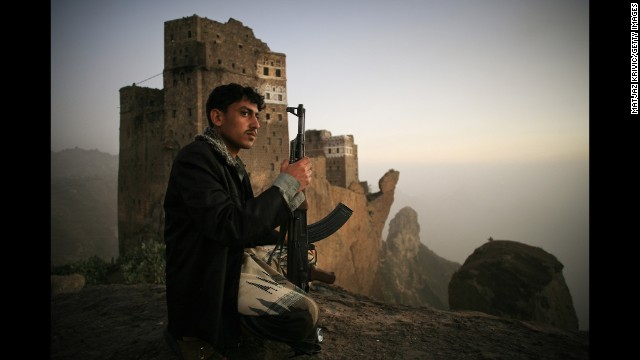 A man guards the the village of Jebel Shugruf in the Haraz Mountains of Yemen in 2006.
A man guards the the village of Jebel Shugruf in the Haraz Mountains of Yemen in 2006.
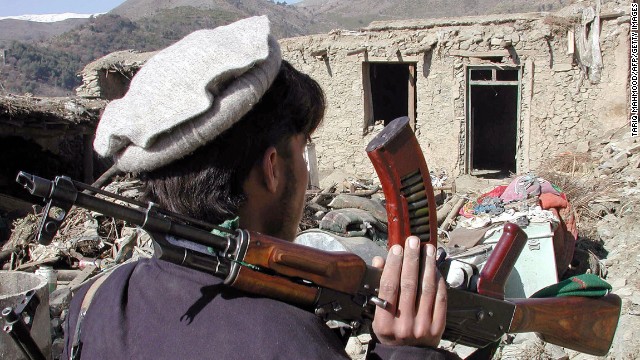 A Pakistani tribesman carries an AK-47 assault rifle after an air strike in Damadola, Pakistan, in 2006.
A Pakistani tribesman carries an AK-47 assault rifle after an air strike in Damadola, Pakistan, in 2006.
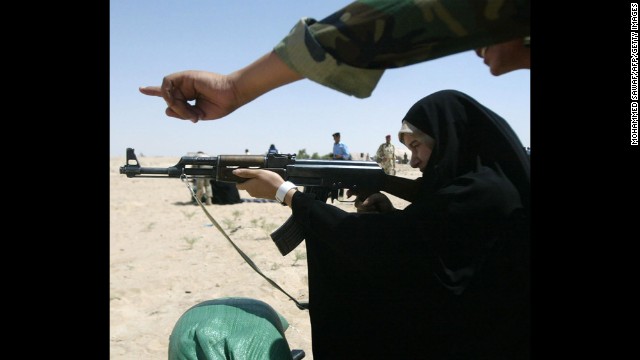 An Iraqi policewoman receives guidance firing an AK-47 during target practice in Karbala, Iraq, in 2008.
An Iraqi policewoman receives guidance firing an AK-47 during target practice in Karbala, Iraq, in 2008.
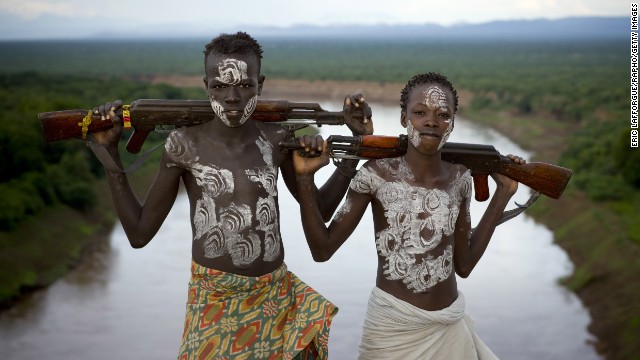 Members of the Karo Tribe pose with AK-47s in Korcho, Ethiopia, in 2008.
Members of the Karo Tribe pose with AK-47s in Korcho, Ethiopia, in 2008.
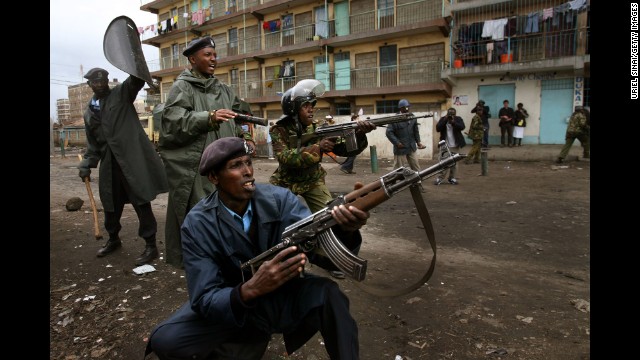 Kenyan policemen confront demonstrators during post-election clashes in the Mathare slums of Nairobi in 2008.
Kenyan policemen confront demonstrators during post-election clashes in the Mathare slums of Nairobi in 2008.
 Newly recruited Rangers practice with their AK-47s during a training session at a military camp in the southern Narathiwat province of Thailand in 2009.
Newly recruited Rangers practice with their AK-47s during a training session at a military camp in the southern Narathiwat province of Thailand in 2009.
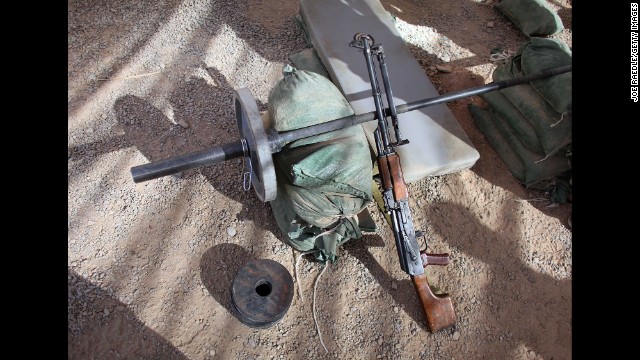 An AK-47 leans against a makeshift bench press that U.S. Marines built in their base in Delaram, Afghanistan, in 2009.
An AK-47 leans against a makeshift bench press that U.S. Marines built in their base in Delaram, Afghanistan, in 2009.
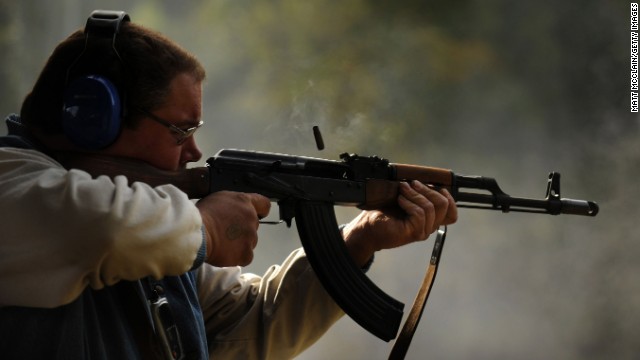 A man shoots an AK-47 at a shooting range in West Point, Kentucky, in 2009.
A man shoots an AK-47 at a shooting range in West Point, Kentucky, in 2009.
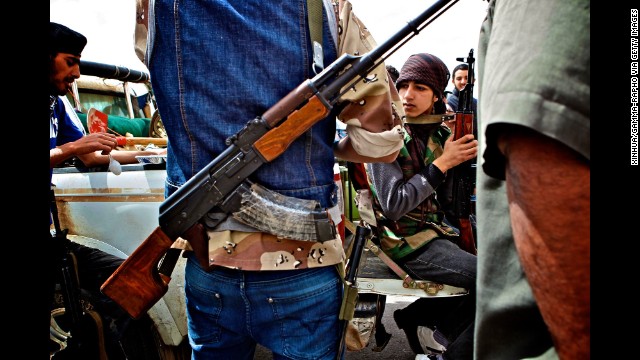 Anti-Libyan-government militants gather on the front line in Brega, Libya, in 2011.
Anti-Libyan-government militants gather on the front line in Brega, Libya, in 2011.
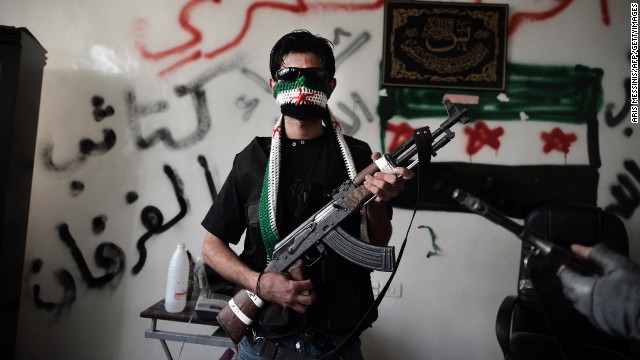 A Syrian opposition fighter poses with his AK-47 in Aleppo, Syria, in 2012.
A Syrian opposition fighter poses with his AK-47 in Aleppo, Syria, in 2012.
 A soldier with the Malian army patrols a street in Gao, Mali, with an AK-47 on February 25, 2013.
A soldier with the Malian army patrols a street in Gao, Mali, with an AK-47 on February 25, 2013.
























No comments:
Post a Comment